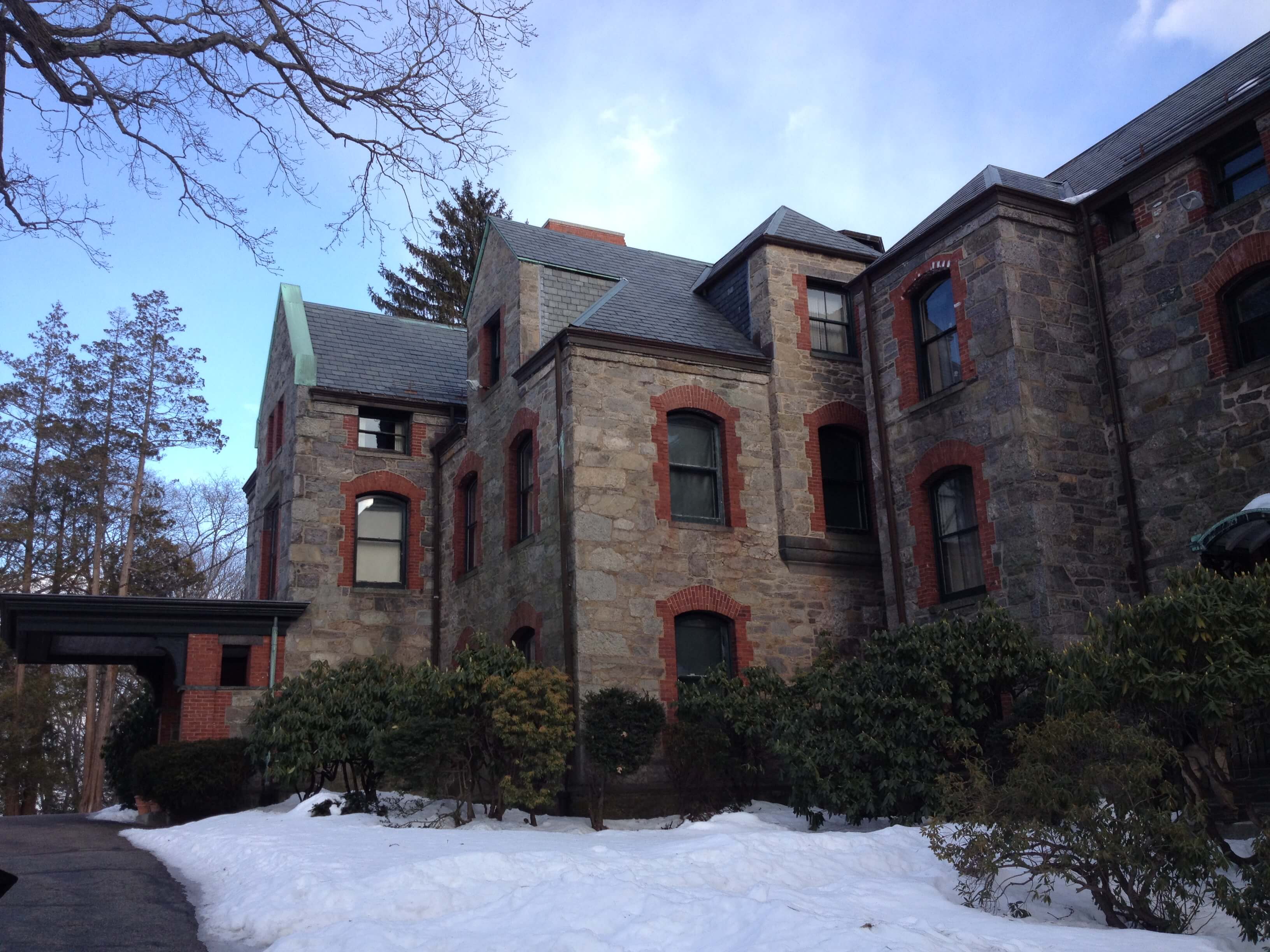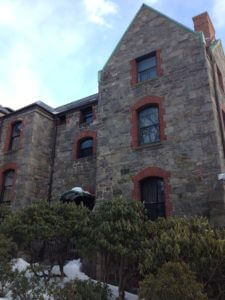As a woman running a business in the construction industry, people may assume I am…

Historic Windows and Creative Modifications – Case Study at the Mary Baker Eddy House
By Valerie J. M. Heider
Being in the business of historic restoration, M&A sees our fair share of creative repairs. Windows are often one of the most repaired elements on an historic building, given their use and maintenance needs. But sometimes, M&A runs into windows which operate in a completely different way than their construction would suggest. One such example is detailed below.
 “Mary Baker Eddy House Partial North Elevation Exterior” An exterior view of the north elevation of the Mary Baker Eddy House
“Mary Baker Eddy House Partial North Elevation Exterior” An exterior view of the north elevation of the Mary Baker Eddy House
As an historic house museum, the windows at the Mary Baker Eddy house in Chestnut Hill are of particular importance to the owners of the property, the Longyear Foundation. These historic elements are crucial to the interpretation of the site, and M&A operated with great care in the preservation of these wood window sash.
 “Mary Baker Eddy House Typical Double Hung Window Viewed From Interior” A typical double hung window, as viewed from the interior, at the Mary Baker Eddy House
“Mary Baker Eddy House Typical Double Hung Window Viewed From Interior” A typical double hung window, as viewed from the interior, at the Mary Baker Eddy House
While most of the windows are one over one true divided lite double hung sash, there are also a number of hopper, fixed, and casement windows.
Three windows in particular… These windows were noted as double hung windows on the project documents, and did indeed appear to be double hung windows. Each window was composed of two sash, each one lite, situated within their opening as a double hung window. However, these windows had been modified and were operational as hopper windows, with the upper sash being fixed and the lower sash being operable.
 “Mary Baker Eddy One of the Double Hung Window Opngs Viewed From Interior” One of the basement window openings in question, viewed from the interior. The window sash had already been removed at this point.
“Mary Baker Eddy One of the Double Hung Window Opngs Viewed From Interior” One of the basement window openings in question, viewed from the interior. The window sash had already been removed at this point.
Upon investigation, M&A observed that:
- The weight pockets at these window jambs showed no sign of use, as there was no damage to the interior of the weight pockets and no weights
- The sash as well as the frame didn’t show any evidence of kerfs for weatherstripping, while all other double hung windows in the building did have kerfed-in weatherstripping
- The hopper window hardware on these sash appeared to be period-appropriate for the house
M&A ultimately concluded that while the architectural components necessary to rehabilitate these windows as double hung windows were present (the pulleys and the weight pockets), these three windows had always operated as hopper windows. As the intent of the project was to restore the windows to their original operation, these windows were restored as hopper windows.
In the case of the Mary Baker Eddy house, M&A was fortunate to work with owners who have particular interest in historic accuracy, as the building is an historic house museum. At the end of the day, if the condition does not jeopardize the strength or longevity of the architectural element, the decision for how to restore or rehab a window falls under the responsibility of the owner, and is often related to how the building is used.



